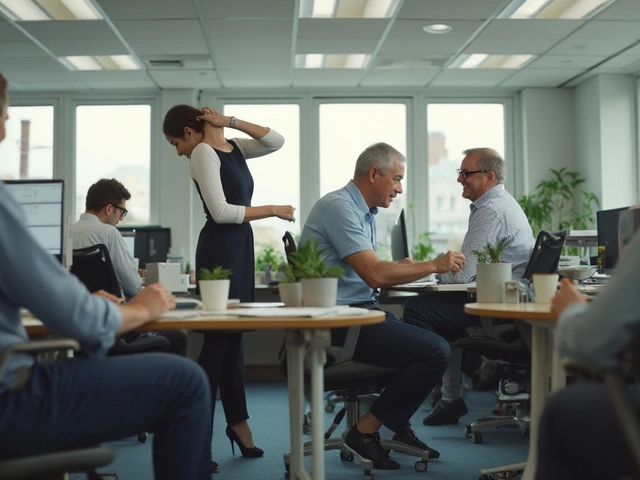Ergonomic Advice: Simple Steps for a Healthier Home and Office
Ever notice how a quick ache after a day at the desk can ruin your evening? It’s usually not the work itself, but the way you’re set up. Small changes to your chairs, desk height, and even where you place a lamp can stop that pain before it starts. Below you’ll find easy, real‑world tips that you can try today – no expensive gadgets required.
Set Up Your Workspace Right
First thing: keep your screen at eye level. If you’re looking up or down more than a few inches, your neck will tighten up fast. Use a stack of books or a cheap monitor riser to bring the top of the screen to just below eye line. Your keyboard should sit so your elbows stay close to a 90‑degree angle. If you can’t adjust the desk, consider a low‑profile keyboard tray.
Next, think about your chair. The seat height should let your feet rest flat on the floor, with knees at the same level as hips. If the chair doesn’t support your lower back, add a small lumbar pillow or rolled towel. A supportive back means you’ll sit up straight without using your muscles to hold you together.
Finally, give your wrists a break. Keep the keyboard and mouse close enough that you don’t have to reach. A soft wrist pad can stop the strain that builds up over hours of typing. Remember to keep your shoulders relaxed – they shouldn’t hunch up toward your ears.
Choose Furniture That Supports Your Body
When you pick a sofa or armchair, test it for comfort before you buy. Sit back, let your feet touch the floor, and make sure there’s a little gap between the back of your knees and the seat. A seat that’s too soft will push you forward, causing slouching. Look for firm cushions that give a bit of bounce but still hold shape.
For home office desks, a sturdy surface matters more than fancy finishes. A desk that wiggles makes it hard to keep your hands steady, leading to tense shoulders. If you work long hours, a sit‑to‑stand desk can be a game‑changer – just remember to switch positions every hour to keep blood flowing.
Storage pieces like bookshelves should be at a height where you can pull items out without bending too much. If you need to reach high shelves often, add a small step stool that’s stable and wide enough for safe footing.
One more tip: move around. Even the best ergonomic setup can’t replace a short walk or stretch break every 60 minutes. Stand up, shake out your arms, and roll your shoulders. These micro‑breaks keep muscles from locking up and improve focus.
Putting these ideas into practice doesn’t have to be a big project. Start with one change – maybe raise your monitor – and notice how you feel after a day. Add another tweak the next week. Over time, you’ll build a workspace that works with your body, not against it, and you’ll say goodbye to that lingering ache.



